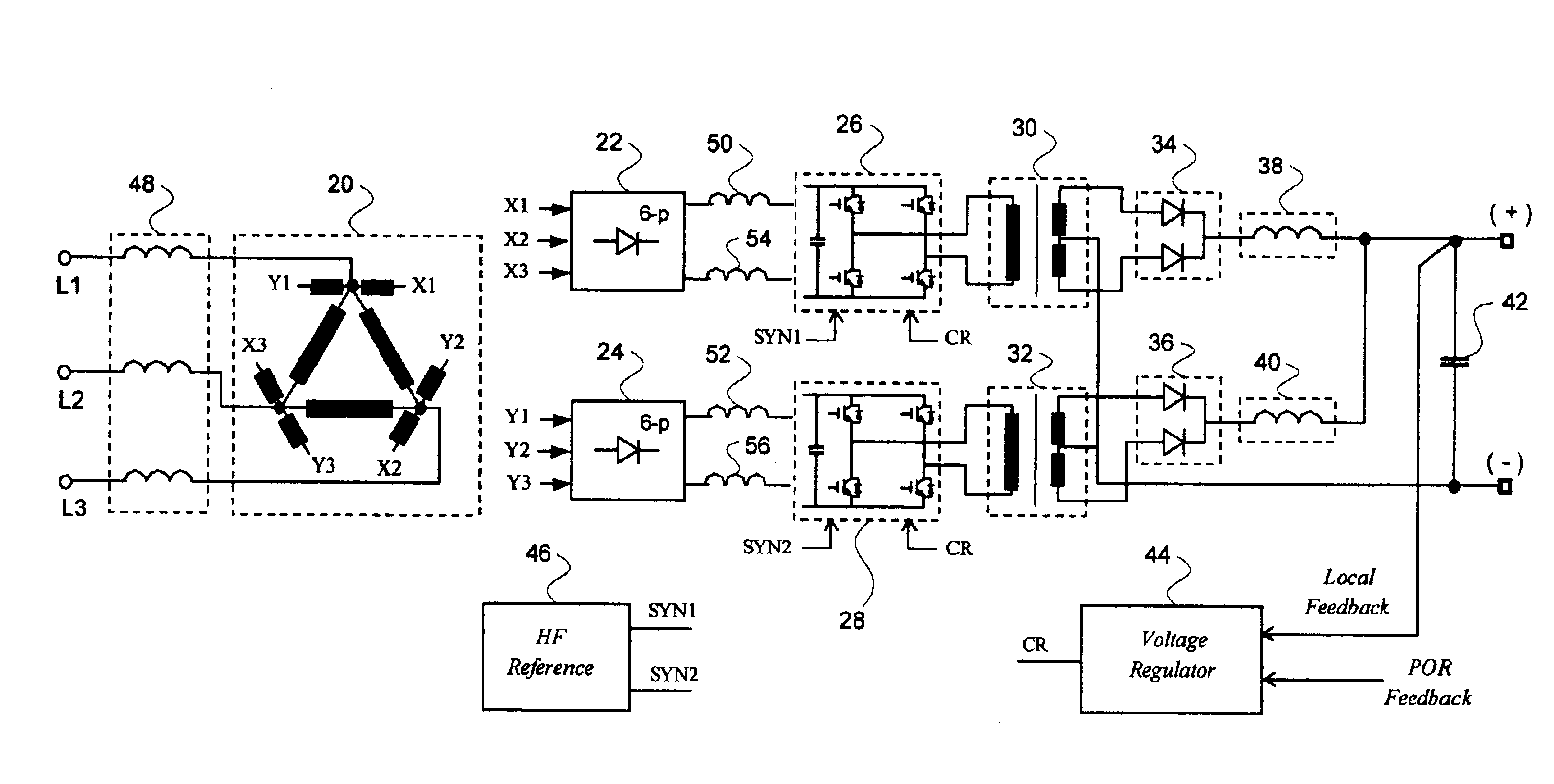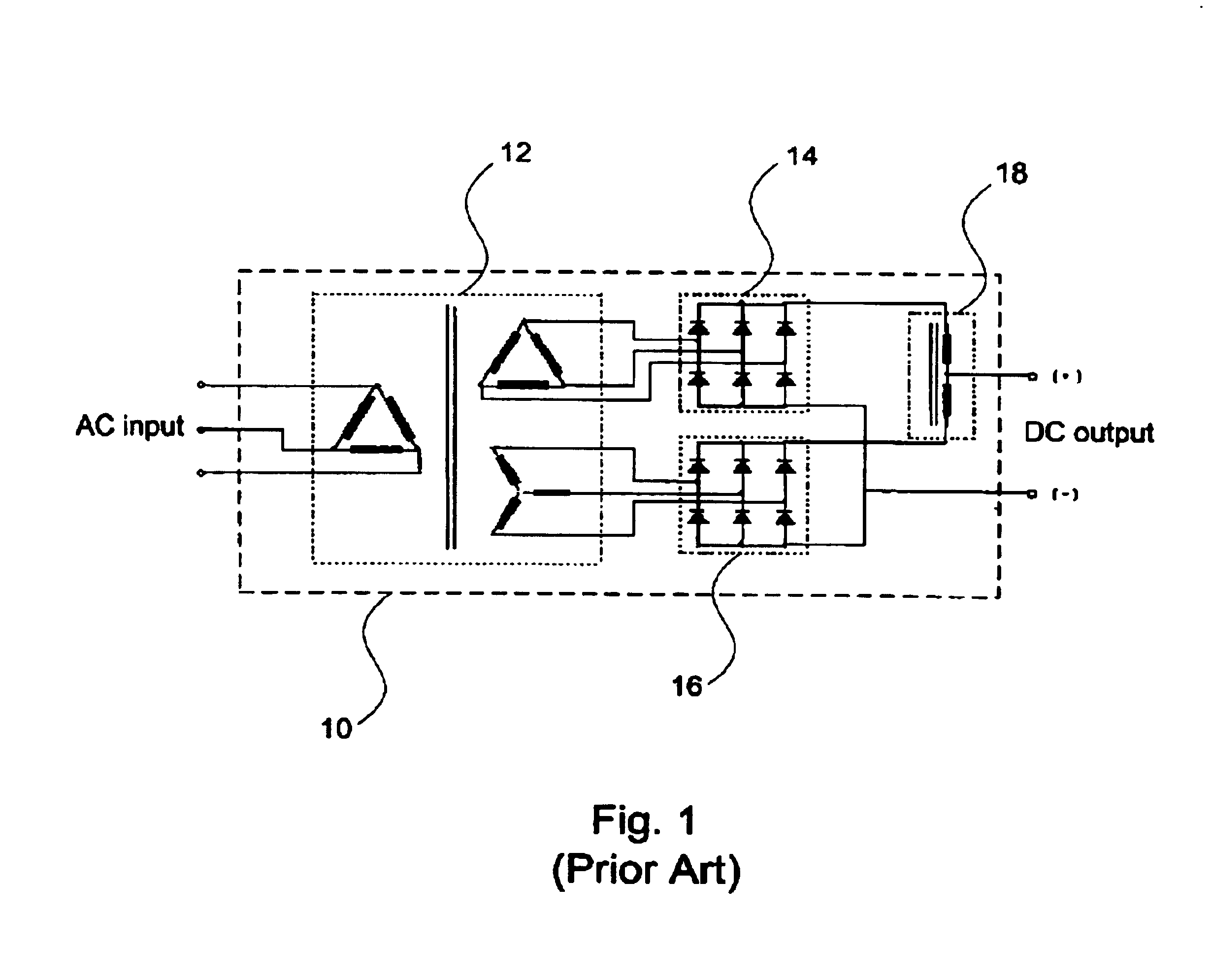Regulated AC to DC converter for aerospace applications
a converter and regulated technology, applied in the field of aerospace ac to dc converters, can solve the problems of not providing significant improvements in ripple content or immunity to input line transients, prior art devices do not include operation over the extended frequency range, and achieve excellent output regulation
- Summary
- Abstract
- Description
- Claims
- Application Information
AI Technical Summary
Benefits of technology
Problems solved by technology
Method used
Image
Examples
Embodiment Construction
[0031]As a general overview, the present invention includes a system, device and method for converting AC power to regulated DC power. In one embodiment, the regulated AC to DC converter of the present invention enables a level of performance that exceeds the power quality requirements of MIL-STD-704 over the extended frequency range, typically from about 360 Hz to 800 Hz. While high-efficiency and low-weight of the AC to DC converter, among other benefits, are advantageous primarily in airborne systems, its use can be extended to terrestrial applications as well.
[0032]According to the present invention, the isolation, regulation and the main power processing are achieved by low-weight, high-frequency conversion stages arranged in 2 channels that produce the line harmonic content typical of the 12-pulse rectification when connected to the AC source using a phase-shifting autotransformer. Control achieved by the present invention provides effective rejection of the line transients, w...
PUM
 Login to View More
Login to View More Abstract
Description
Claims
Application Information
 Login to View More
Login to View More - R&D
- Intellectual Property
- Life Sciences
- Materials
- Tech Scout
- Unparalleled Data Quality
- Higher Quality Content
- 60% Fewer Hallucinations
Browse by: Latest US Patents, China's latest patents, Technical Efficacy Thesaurus, Application Domain, Technology Topic, Popular Technical Reports.
© 2025 PatSnap. All rights reserved.Legal|Privacy policy|Modern Slavery Act Transparency Statement|Sitemap|About US| Contact US: help@patsnap.com



